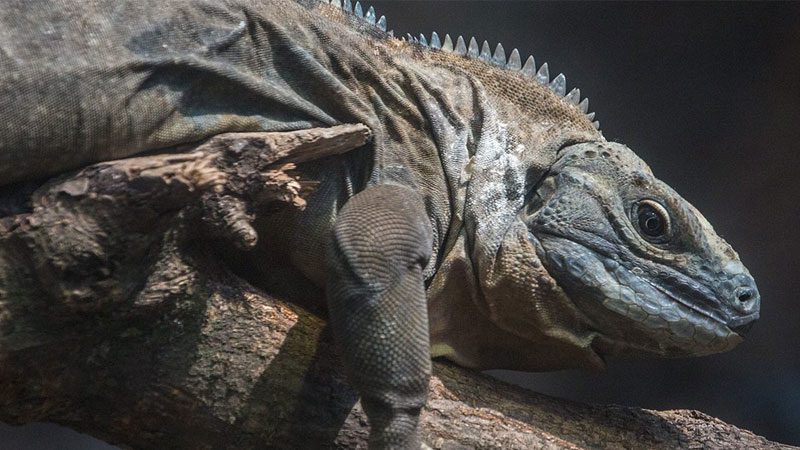Welcome to Lincoln Park Zoo’s new web app! Share your feedback
Jamaican Iguana
Regenstein Small Mammal-Reptile House
Did You Know?
- Jamaican iguanas are the largest terrestrial animal native to Jamaica. They live in a 4-square-mile area called the Hellshire Hills in Jamaica.
- In their tropical ecosystem, they play a role in spreading seeds that grow into native plants.
- As of 2021, there are an estimated 500–600 adults in the population, an increase from the historical low of fewer than 50.
Don’t See the Animals?
Why aren’t animals visible at all times? To promote positive animal welfare, we provide animals with choices. They can choose to spend time in areas that are out of public view.

Take an Animal Home with You
Overview
Scientific Name: Cyclura collei
Class: Reptiles
Diet: Leaves, fruits, and flowers (also snails and insects)
Range: Jamaica
Endangered Status: Critically Endangered
More Information
Jamaican iguanas are greenish-gray, sometimes with brown or olive patches. They have blue areas on their face and spine plus dark zigzag spots along their back. These iguanas can be as long as 20 inches from their snout to the vent under the tail, with males a bit larger. They spend time both on the ground and in trees and build nests in underground burrows.
Females deposit 6–20 eggs into the nests around mid-June but have variable success in hatching them after an incubation period of about 86 days. It seems to depend on the mother’s body size and seasonal rainfall extremes. These reptiles are one of the most endangered lizards in the world, experiencing threats such as invasive mongooses and habitat loss. In fact, the iguanas were thought to be extinct until 1990, after which conservation practices were begun to help them — including headstarting, constant monitoring and predator control.

